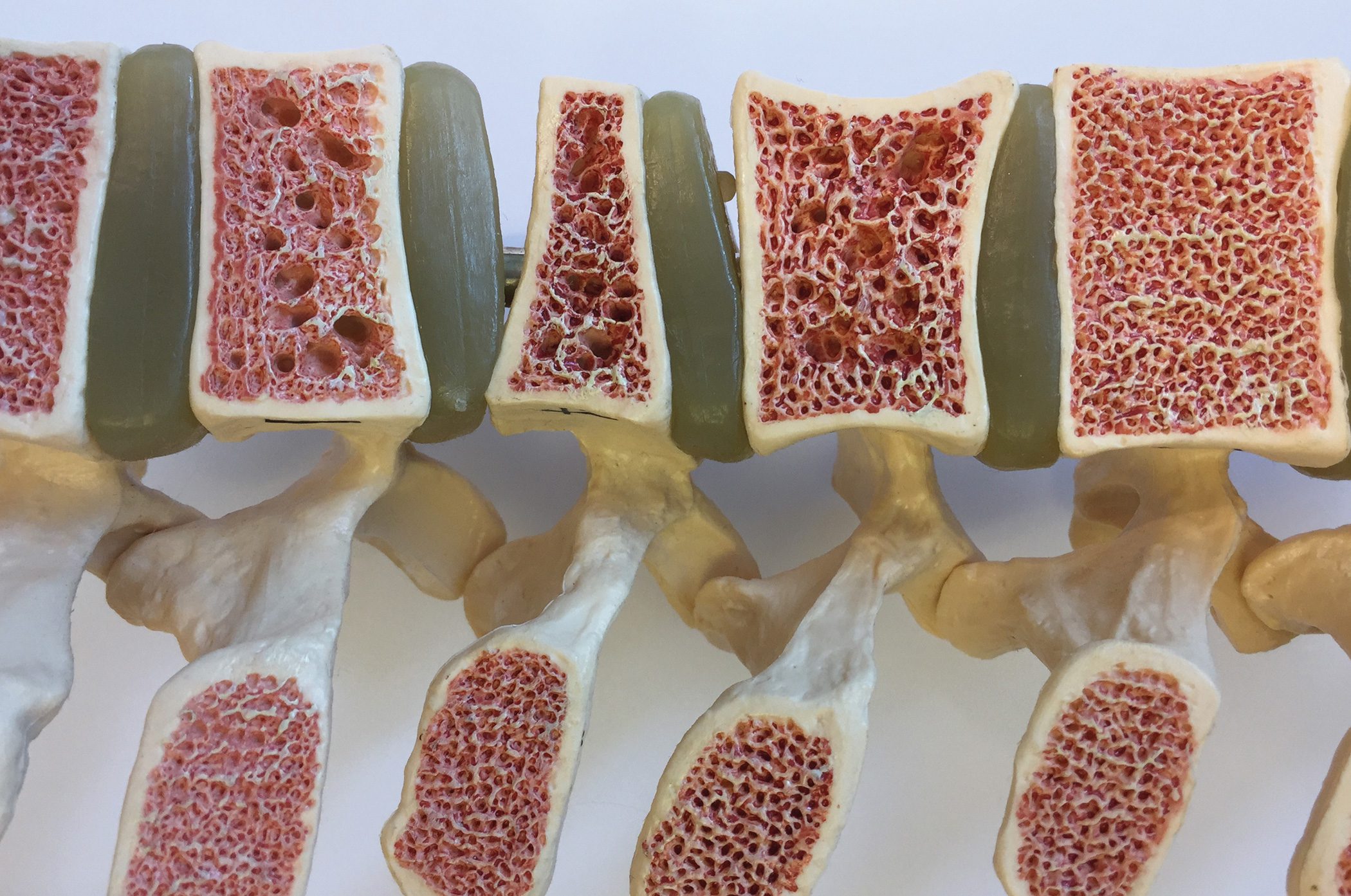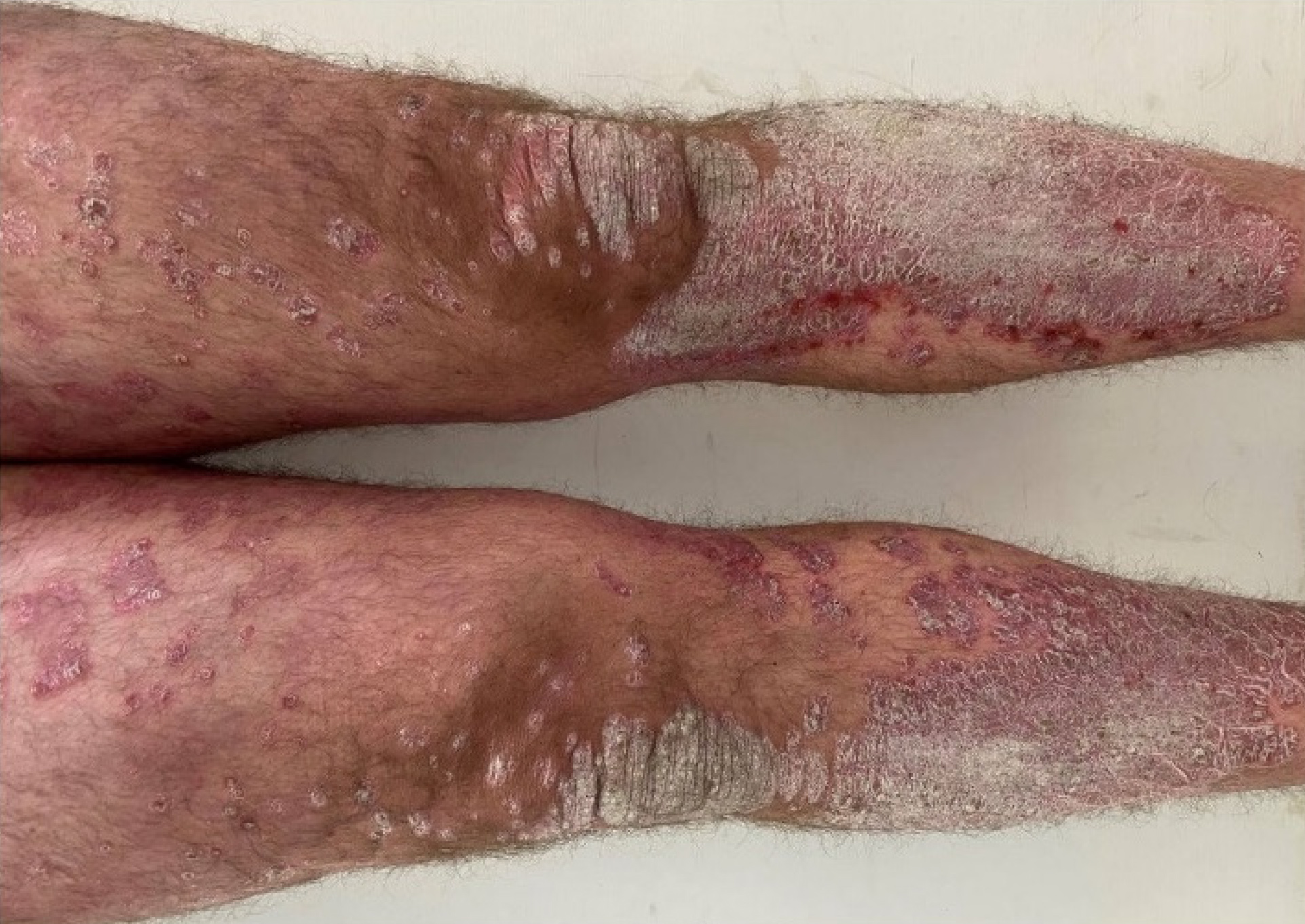If psoriatic arthritis is not adequately treated in good time, it can lead to permanent deformities and functional limitations. A broad armamentarium of evidence-based effective systemic therapeutics is available for treatment today. The current GRAPPA recommendations propagate a treatment algorithm based on the predominant disease entities. Any comorbidities should also be taken into account when considering the most suitable active substance for each patient.
In psoriatic arthritis (PsA), permanent foci of inflammation develop due to misdirected immune reactions. Nowadays, PsA is conceived as a heterogeneous systemic disease, which has also been incorporated into treatment concepts. “A multidimensional and multidisciplinary approach is useful and can help improve treatment outcomes,” said Prof. Laure Gossec, MD/PhD, Sorbonne Université and Pitié Salpétrière Hospital, Paris (F), summarizing the basic idea of the treatment approach proposed by GRAPPA (Group for Research and Assessment of Psoriasis and Psoriatic Arthritis) [1,2]. Accordingly, the disease domains primarily involved in each case should be considered: peripheral arthritis, axial involvement, enthesitis, dactylitis, skin psoriasis, and nail psoriasis [2]. The main symptoms of PsA are painful inflamed joints, psoriatic skin lesions and nail psoriasis. Approximately two-thirds of all PsA patients are first diagnosed between the ages of 30 and 60 [3]. From a British cross-sectional study, skin manifestations preceded joint involvement in 72.4% of cases [3]. PsA was diagnosed before psoriasis in only 10.8% of patients, and skin and joint involvement manifested almost simultaneously in 16.8%.
Domain-specific approach
Based on the GRAPPA recommendations and the corresponding evidence base, Prof. Gossec concretized the proposed domain-specific treatment algorithms as follows:
Severe skin involvement: In PsA patients with severe skin involvement, interleukin (IL)-17 or IL-23 inhibitors are the most appropriate therapeutic option. This can be inferred from head-to-head studies in which biologics targeting IL-23 (or IL-12-/-23) or IL-17 showed better efficacy with respect to skin lesions than TNF-α inhibitors or Janus kinase (JAK) inhibitors, Prof. Gossec said [1,5].
Peripheral arthritis: If peripheral arthritis is the primary concern, the use of a biologic is recommended after a conventional DMARD. Of the “small molecules”, the use of MTX can be considered for patients with mild peripheral arthritis, while with regard to JAK-i, the EMA safety warning should be followed [1].
Axial involvement: In patients with pronounced axial involvement, the presenter recommends the use of an IL-17A-i first after a treatment trial with NSAIDs (nonsteroidal anti-inflammatory agents) [1]. There is evidence on secukinumab from the MAXIMISE study (Managing AXIal Manifestations in psorIatic arthritis with SEcukinumab) [6]. Here, secukinumab proved to be clearly superior in the placebo comparison with regard to ASAS20 response (Ankylosing Spondylitis Response. Criteria). In contrast, there is no positive evidence of efficacy for IL-23 in axial involvement. Secondary therapeutic options after IL-17-i are TNF-α-i, IL-17A/F-i, and JAK-i.
Enthesitis: According to the lecturer [1], an initial treatment attempt with NSAIDs is also advisable in cases of enthesitis. Subsequently, either the use of a biologic (TNF-α-i, IL-17-i, IL-23-i, IL-12/23-i) or methotrexate (MTX) is reasonable. The fact that MTX are formulated as a therapeutic option on par with biologics was one of the innovations of the GRAPPA recommendations published in 2021, which are still current. JAK-i is mentioned as a secondary therapeutic option.
Uveitis or CED: It is also important to consider whether patients have uveitis or inflammatory bowel disease (IBD) [1]. In uveitis, the use of a TNF-α-i acts as a preferred therapeutic option, whereas in IBD, the IL-12/23 inhibitor ustekinumab, as well as the IL-23 inhibitors risankizumab and guselkumab are particularly suitable. Of the JAK-i, upadacitinib may be considered in CED, and tofacitinib may be considered in Crohn’s disease. Last but not least, patient preferences regarding dosage form should be taken into account (injections at intervals of several weeks vs. tablets to be taken daily).
With regard to NSAIDs as a therapeutic option, the speaker pointed out that these should only be considered for axial joint involvement and enthesitis, but not for peripheral arthritis or skin psoriasis.
Targeted therapies – making individually appropriate choices
One advantage of modern targeted agents (bDMARDs and tsDMARDs) is that they can relieve both skin and joint symptoms. In addition to several classes of biologics (TNF-α-i, IL-17-i, IL-23-i, IL-12/23-i), the two JAK inhibitors tofacitinib and upadacitinib as well as the PDE4 inhibitor apremilast are three representatives of the “small molecules” available for the indication PsA [1,4] (Tab. 1) . And the range of treatment options is constantly expanding. In clinical trials investigating the efficacy and safety of active agents, the American College of Rheumatology (ACR) criteria are used as the endpoint in PsA. ACR20 indicates the proportion of patients with 20% improvement, in terms of number of joints with swelling and pressure pain, and five additional scores (e.g., VAS pain, PGA, HAQ, and inflammatory parameters such as ESR or CRP).
Comparing the biologics available for PsA (Tab. 1) based on the results in randomized-controlled pivotal clinical trials, ACR20 response rates are in the range of 42-64%, so there are some differences between different bDMARDs, but they are not very large, considering that the respective placebo response rates were not identical either, the speaker summarized.
In the “small molecule” setting, apremilast, with an ACR20 response of about 40%, is only slightly below the response rates achieved with biologics. Tofacitinib achieved an ACR20 response of 50% in OPAL Broaden and Beyond. The JAK-i upadacitinib cut with an ACR20 response of about 70% bwz. 56% in SELECT-PsA-1 and -2 performed very well in terms of efficacy. “Of course, it is always important to take into account the side effect risks of the drugs and the safety profile in general,” said Prof. Gossec [1]. While the safety concerns published by the EMA regarding JAK-i relate to data in patients with rheumatoid arthritis. But it was decided to extend it to other indications of JAK-i, including PsA [9].
Do not disregard cardiometabolic comorbidities
Comorbidities are very common in PsA. In addition to obesity, hypertension, diabetes, and hyperlipidemia are common in this patient population. As a result, cardiovascular risk is increased. The fact that PsA patients have a 10% higher mortality risk than age- and sex-matched individuals in the general population is largely due to this, the speaker said. On the question of which substance classes are better or less suitable for which comorbidities, a useful overview can be found in the current GRAPPA recommendations (Tab. 2) [1]. In general, a therapy option should be chosen that has the best possible benefit-risk profile for a given patient.
Congress: EULAR Annual Meeting
Literature:
- «How to treat Psoriatic Arthritis», Prof. Laure Gossec, EULAR Annual Meeting, 31.05.–03.06.2023.
- Coates LC, et al.: Group for Research and Assessment of Psoriasis and Psoriatic Arthritis (GRAPPA): updated treatment recommendations for psoriatic arthritis 2021. Nat Rev Rheumatol 2022; 18: 465–479.
- Ogdie A, et al.: Prevalence and treatment patterns of psoriatic arthritis in the UK. Rheumatology 2013; 52: 568–575.
- Swissmedic, www.swissmedic.ch/swissmedic/de/home/services/arzneimittelinformationen.html,(last accessed 03.07.2023).
- Sbidian E, et al.: Systemic pharmacological treatments for chronic plaque psoriasis: a network meta-analysis. Cochrane Database Syst Rev 2022; 5(5):CD011535.
- Baraliakos X, et al.: Secukinumab in patients with psoriatic arthritis and axial manifestations: results from the double-blind, randomised, phase 3 MAXIMISE trial. Ann Rheum Dis 2021; 80(5): 582–590.
- Yang K, Oak ASW, Elewski BE: Use of IL-23 Inhibitors for the Treatment of Plaque Psoriasis and Psoriatic Arthritis: A Comprehensive Review. Am J Clin Dermatol 2021; 22(2): 173–192.
- Akeda T, Yamanaka K: Treatment in Patients with Psoriatic Disease and Rheumatoid Arthritis: Seven Case Reports. Clinics and Practice 2023; 13(1): 177–189, www.mdpi.com/2039-7283/13/1/16, (letzter Abruf 04.07.2023)
- European Medicines Agency (EMA), www.ema.europa.eu/en/medicines/human/referrals/janus-kinase-inhibitors-jaki,(last accessed 07/05/2023).
DERMATOLOGIE PRAXIS 2023; 33(5): 28–30
InFo RHEUMATOLOGIE 2023: 5(2): 34–35















